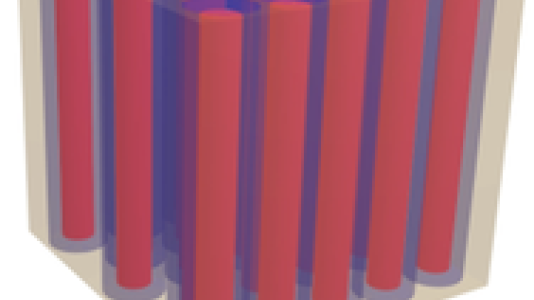
Permanent magnets are indispensible for conversion between mechanical and electrical energies. Nanocomposite permanent magnet materials based on the “exchange spring” mechanism, in which a soft magnetic phase is hardened via interfacial exchange coupling to a hard magnetic phase, offer the promise of a superior maximum energy product [(BH)max] and good high-temperature performance, and are a potential solution to the supply criticality in rare earth elements. However, for the past several decades, fabricating nanocomposite magnets with high performance has remained an unrealized technological goal. The development of the nanocomposite permanent magnet materials can benefit from a rational design of the structure. We have identified an optimal exchange-spring structure that balances property enhancement and the feasibility of scalable fabrication. By analyzing the magnetization processes in several model exchange-spring structures with both micromagnetic simulations and nucleation theory, we evaluated the nucleation field, which is the field at which magnetization reversal happens, and (BH)max as functions of the hard and soft phase dimensions for different exchange-spring geometries. We pointed out that the soft-cylinders-in-hard-matrix structure has the highest achievable (BH)max, and is amenable to scaled-up fabrication. On the other hand, the current practice of bottom-up syntheses starting with nanoparticles (both hard and soft) can only attain much lower values of (BH)max. Our work charts a new direction for the development of high-performance rare-earth-replacement magnet materials.
Rational design of the exchange-spring permanent magnet,
J. S. Jiang, and S.D. Bader,
J. Phys.: Cond. Matt., 26, 064214 (2014).